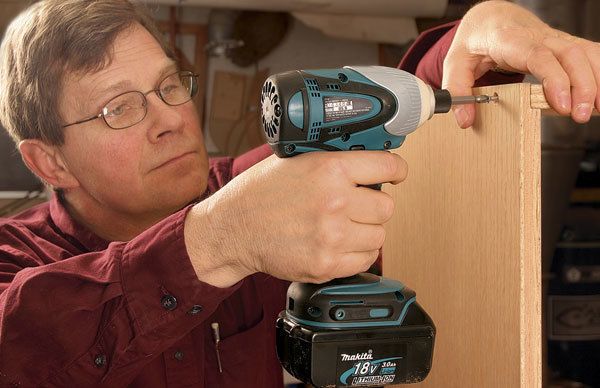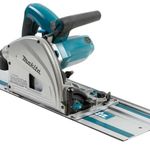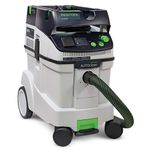All About Impact Drivers
Is there a place for them in furniture-making shops?
Synopsis: A cordless impact driver may look like a cordless drill, but there are key differences. For one, the impact driver generates about four times the torque of a same-size drill, thanks too a spring-loaded cam and gear mechanism that kicks in when driving gets tough. Roland Johnson found that the impact driver comes in handy for jobs such as driving large screws, drilling big holes, and turning nuts and bolts. In fact, he found a lot to like about these tools: compact size, light weight, added torque, quick-change chuck, and improved driving control.
At a quick glance, you might mistake a cordless impact driver for a common cordless drill. Both can drive screws and drill holes. A closer look shows critical differences, however. Curious to find out if those differences have any significance when making furniture, I gave several impact drivers—ranging in size from 9.6v to 18v—a workout in my shop.
Impact drivers crank out more torque
Torque is a measure of twisting force. Compared to a cordless drill with the same-size battery, an impact driver produces about four times the torque.
Under normal screw-driving torque, an impact driver operates exactly like a typical cordless drill. But when the driving gets tough, a spring-loaded cam and gear mechanism kicks in. Often, the driver works like a drill as you begin to drive a screw. As the screw goes farther into the wood, the driver switches to impact mode.
A few good things happen when the impact function is in action. You don’t need to apply as much downward pressure on the screw head to keep the bit in place. You don’t need a hold-on-for-dear-life grip. And because the screw rotates slowly when in impact mode, you have great control over the depth of the screw. No need to fret about the screw spinning out of control to a point well below the surface—you spin the screw head slowly until it’s perfectly flush.
Be aware, though, that impact drivers don’t have adjustable clutches like cordless drills have. When driving a screw that’s too tight, the applied torque can twist the upper portion of the screw and snap it off. Granted, cordless drills have been known to snap screws, but it’s more likely with impact drivers.
Also, because impact drivers are clutchless, you can drive a screw too far. That’s most likely to occur with a small screw. Because it takes little torque to drive a small screw all the way, the impact mode doesn’t kick in and the driver behaves like a regular drill.
One more point: Impact drivers have a quickchange chuck, so it takes seconds to add or remove a drill-driver or bit. But the chucks accept only hexshank bits, which don’t slip but are harder to find and are more expensive than bits with round shanks.
Power to suit every need
Cordless impact drivers come in a range of battery sizes; typically 9.6v, 12v, 14.4v, and 18v. Surprisingly, the size and weight of the tool don’t change much as the battery size increases.
After using each tool in my shop for several weeks, I concluded that they all have more power than most furniture makers need. That said, if I had to pick a size, I’d want an 18v driver. It’s relatively light, yet drives 3-in.-long screws with little fuss.
From Fine Woodworking #188
For the full article, download the PDF below:
Fine Woodworking Recommended Products

Makita SP6000J1 Track Saw

Festool Cleantec CT 26 E HEPA Dust Extractor

Festool DF 500 Q-Set Domino Joiner






















Log in or create an account to post a comment.
Sign up Log in